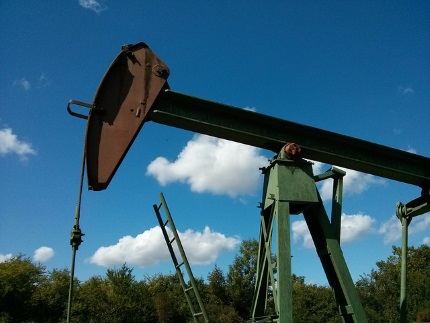I continue to love the sector Wall Street seems to hate: energy. Analysts are saying oil has peaked and bad times are directly ahead for the sector. I believe that oil markets are more fragile than the recent price decline might signal.
The same factors that sent energy prices higher over the past year remain in place. Global stockpiles are low and the energy supply system is running near flat. The OPEC+ alliance has very little spare capacity, and what’s left is held almost entirely by Saudi Arabia and the United Arab Emirates. Refiners are producing about as much fuel as they can. And governments (including the U.S.) are drawing down their emergency supplies at a record pace.
All of these factors leave little room for the market to absorb any future supply shocks, which I think are likely.
So the reality, away from Wall Street, is that these are good times for the industry—especially oilfield service providers. These are the companies that carry out the grunt work of drilling and servicing oil and gas wells.

These companies suffered a near-death experience in 2020, when the pandemic shattered demand for oilfield activity and upstream spending by oil companies. The collapse in demand prompted the oil service companies to sack tens of thousands of workers and idle their equipment. But now their fortunes have completely reversed.
The large energy producers, having initially opted to take advantage of the oil price rally to repair their balance sheets and return money to shareholders, are finally expanding again.
This increasing demands from drillers, coupled with widespread shortages in everything from the sand used in fracking shale wells to rig hands and drivers, have greatly improved profit margins for oil services providers.
Of the three major U.S. oil servicers, only Baker Hughes is struggling (its equipment division is still a laggard). The other two companies—Schlumberger (SLB) and Halliburton (HAL)—are doing quite well, thank you.
Schlumberger
In fact, Schlumberger reported a fantastic quarterly profit and sharply raised its outlook for the year.
Schlumberger’s second quarter showed net income of $959 million, more than double the level in the same period last year. Revenues of $6.7 billion were up by a fifth. North American sales rose 42%. The company posted 20% year-over-year revenue growth and an operating margin of 17%—a level not seen since 2015!
CEO Olivier Le Peuch said that the world’s biggest provider of services to the oil and gas industry anticipated its revenue growth rate this year to be in the high-teens, resulting in revenues of “at least” $27 billion, compared with $23 billion in 2021. The company also expects adjusted EBITDA margins to be 200 basis points higher than they were in the fourth quarter of 2021.
Le Peuch added that the industry was in the middle of a “multiyear upcycle [that] continues to gain momentum with upstream activity and service pricing steadily increasing both internationally and in North America.”
In a true sign of management confidence, Schlumberger raised its dividend by 40% in the first quarter of 2022, to $0.70 annually, making the current yield 2%. I expect the dividend raises to continue for the foreseeable future. My eventual target is the company’s pre-pandemic dividend rate of $2.00 per share annually.
Add to that Schlumberger’s exceptional investment history. Over the years, it has rather consistently generated shareholder value through use of its R&D capital investment dollars to develop a wide variety of new products and services. Roughly 25% of revenue comes from new technology each year.
That makes the stock a compelling buy anywhere in the mid-30s per share.
Halliburton
Jeff Miller, CEO of Halliburton, reiterated the concerns about the shortages facing the oil industry.
He said that the North American oil services market remains “all but sold out” this year and that there was no indication of that changing next year. He further pointed out that the shortages of labor and equipment at U.S. oilfields are likely to get worse next year, adding: “What we see in our business is activity [and] demand moving up. We see a tighter [20]23 than we see in 2022,” he said. Keep in mind that Halliburton is the largest domestic frac fleet operator.
His comments came as Halliburton reported revenues of $5.1 billion for the second quarter, up 18% on the previous quarter and 37% on the year-ago period. Net income of $117 million was about half of last year’s income as a result of impairment charges from the company’s exit from Russia. Excluding these costs, it roughly doubled to $442 million.
And Miller dismissed those Wall Street fears of an impending slowdown. He said company discussions with operators were focused on demand for “more equipment or more services” in 2023, “not recession—I can promise you that is not the discussion.”
And like the Schlumberger CEO, Miller reaffirmed his view that the company was entering a “multiyear up cycle” both domestically and internationally. While Halliburton is less exposed to international markets than its peers, it is one of the top players in markets like the Middle East and Asia, where long-term growth is forecast to be the strongest.
The company’s optimism, like Slumberger’s, has spread to its dividend policy. Halliburton tripled its dividend in January, to $0.48 per share annually (the current yield is 1.73%). I expect more shareholder and dividend-friendly announcements over at least the next year or two. My target for now is the company’s prior annual dividend (pre-pandemic) of $0.72 per share.
Halliburton shares are a buy in the $28 to $32 range.





